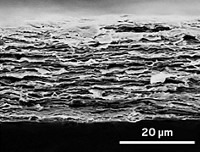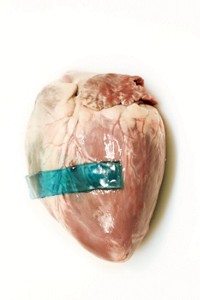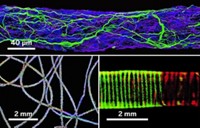Advertisement
Grab your lab coat. Let's get started
Welcome!
Welcome!
Create an account below to get 6 C&EN articles per month, receive newsletters and more - all free.
It seems this is your first time logging in online. Please enter the following information to continue.
As an ACS member you automatically get access to this site. All we need is few more details to create your reading experience.
Not you? Sign in with a different account.
Not you? Sign in with a different account.
ERROR 1
ERROR 1
ERROR 2
ERROR 2
ERROR 2
ERROR 2
ERROR 2
Password and Confirm password must match.
If you have an ACS member number, please enter it here so we can link this account to your membership. (optional)
ERROR 2
ACS values your privacy. By submitting your information, you are gaining access to C&EN and subscribing to our weekly newsletter. We use the information you provide to make your reading experience better, and we will never sell your data to third party members.
Biomaterials
Composite hydrogel makes strong, durable heart valves
New synthetic valves last 50,000 beats without rupturing
by Prachi Patel, special to C&EN
April 1, 2021
| A version of this story appeared in
Volume 99, Issue 12
With a new durable composite hydrogel, researchers have 3D printed heart valves that last nearly 100 times as long as valves made with a simple hydrogel (Matter 2021, DOI: 10.1016/j.matt.2021.03.011).
Today’s replacement heart valves made from animal tissue and metals can cause complications. Hydrogels, water-infused polymer networks that mimic soft biological tissue, are promising alternative materials. They can be loaded with patients’ cells to be more biocompatible and even grow with patients. “For years, people have talked about replacing tissue with hydrogels,” says Zhigang Suo, a professor of mechanics and materials at Harvard University.
But hydrogels rupture when bent repeatedly. Researchers have embedded carbon or glass nanofibers into hydrogels for more strength, but they have created only simple shapes, such as sheets and blocks, with those composites.
Suo, Jingda Tang of Xi’an Jiaotong University, and their colleagues developed a novel composite that allows them to 3D print complex structures. The composite has a skeleton made of a polyacrylamide–polyacrylic acid (PAAm-PAA) hydrogel, which contains carboxyl-iron complexes for strength. This skeleton is coated with a much softer polyacrylamide hydrogel. Both hydrogels are elastic.
To make heart valves, the researchers use stereolithography—a 3D-printing technique that polymerizes a liquid precursor with laser light—to first create a skeleton in the required shape. Then they put the skeleton in a mold and inject acrylamide monomer. The monomer soaks into the skeleton network, so when the team polymerizes the acrylamide, the two polymer networks get entangled at the interface. The composite’s toughness and durability come from this entanglement, Suo says, because it prevents the propagation of any microscopic cracks that might form in the material.
When the team pumped water through valves made of either the composite hydrogel or a PAAm-PAA hydrogel, the PAAm-PAA valves fractured after 560 cycles, while the composites were intact after 50,000 cycles.
“It’s really impressive that they were able to get this stretchy, strong elastomeric material,” says K. Jane Grande-Allen, a bioengineer at Rice University. The material will have to last much longer given that a healthy human heart beats about 3 billion times in a lifetime. But, she adds, “50,000 cycles is a milestone that any serious contender for a polymer valve should get to. That’s really good, especially since it’s clearly not particularly optimized yet, just a proof of concept.”





Join the conversation
Contact the reporter
Submit a Letter to the Editor for publication
Engage with us on Twitter